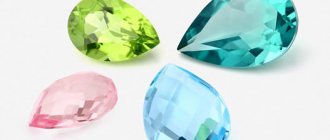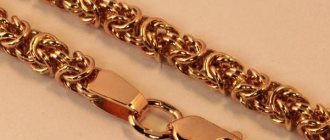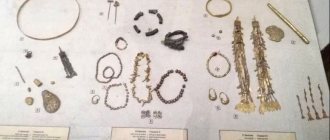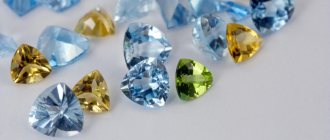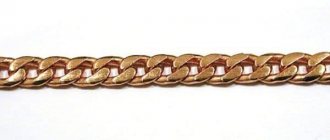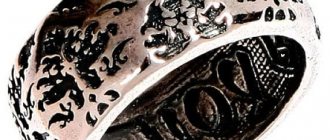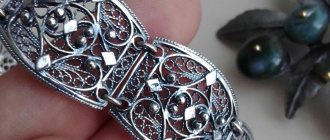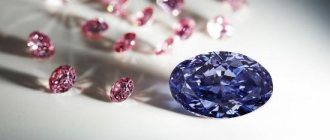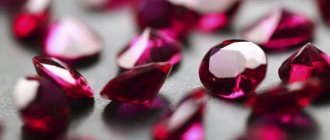Jewelry in ancient Egyptian style
They date back to ancient times. It also includes Greek and Byzantine styles. Egyptian is the most mystified. Most of the decorations contain divine images.
These are not only creatures with the bodies of people and the heads of dogs and birds, but also their earthly incarnations. The scarab, for example, is one of the forms of the god Ra. The beetle is also present in many modern Egyptian-style jewelry.
Symbolically, jewelry means a connection with the luminary, feeding it with energy. Therefore, the use of gold or alloys of yellow tones is typical for the Egyptian direction.
Silver was used less, but it was valued on a par with gold, since it was associated with Isis. This is the goddess of fertility, and at the same time the secrets of life. So, jewelry made of Egyptian style from silver appeals to the feminine, maternal, creative principles.
Since jewelry in Egypt was dedicated to deities, thus appealing to their favor, the jewelry was made massive and bright. Must be visible from heaven. By the way, the Egyptians considered each stone in jewelry to be a conductor to the energy of one of the stars.
The favorite gems of the ancient people were lapis lazuli, carnelian, rock crystal, and garnets. They are also used to decorate modern bracelets and necklaces in order to preserve the style of the Egyptian era.
Egyptian style decoration
Leveling up Jewelcrafting WoW Burning Crusade Classic
Draenei initially have +10 Jewelcrafting skill thanks to their passive racial ability, Stone Carving. This means that all recipes stay orange for the extra 10 skill points, so Draenei can save a lot by making lower recipes for those 10 points.
1 — 35
Buy a Jeweler's Kit from the Jeweler's Supplies vendor near the trainer or from the General Items Merchant.
55 x Fine Copper Wire - 110 x Copper Ingot
Save this for future use. You can stop doing it when you reach skill 35 and do more later if necessary.
35 — 50
15 x Tiger Eye Ring - 15 x Tiger Eye, 15 x Fine Copper Wire
You can also make 15 x Malachite pendant.
Gothic style jewelry
Jewelry in the Gothic style is almost as massive as that of the ancient Egyptians. The philosophy of the era is based on the dream of God's city on earth. Hence the majestic structures with pointed elements.
The latter became a sign of striving for heaven. The inhabitants of the Middle Ages saw the City of God as something monumental and majestic. This was reflected in the architecture, and then in clothes and jewelry. There was no place for flying fabrics and barely visible earrings and rings.
Jewelers of the Middle Ages chose black onyx from stones. Shaded with white metals, it reminded of the frailty of existence. Rings in the shape of skulls were also associated with her. Rubies were reminiscent of the blood of God. Gothic jewelry, in general, abounds in hidden and overt symbols of faith, for example, crosses.
Gothic
The Gothic movement originated in the Middle Ages. It was first used in architecture. But soon jewelers picked up the trend and began to give their products Gothic shapes. This direction is characterized by a game of contrasts . These can be accessories made of blackened silver with red crystals or gold items with black minerals.
Modern Gothic has many interpretations . Now this direction is no longer considered youth. As a rule, gothic accessories attract not only young girls, but also mature women.
Oriental style jewelry
The style is timeless, connected to the geography and culture of the region. Egyptian jewelry is also oriental. The other jewels in the group are just as large. Their massiveness can be expressed in compositions of dozens of small objects.
In India, for example, they wear thin bracelets this way. But, no matter what the jewelry of the East, they are always symmetrical. Harmony is the basis of the worldview of the inhabitants of the region. They do not like disorder and believe that only symmetry can be divine.
Oriental style jewelry
The only prescription you'll need to buy
One recipe here is not available through the trainer: Design: Agate Shield Pendant. However , this is certainly
the cheapest alternative for this level range for which there are very few good options available from trainers.
This spell has limited availability from the following vendors:
- Neil Allen, Menethil Harbor, Swamps /way 10.6 56.8
- Handia, Freewind Post, Thousand Needles, /way 46.0 51.6
If you can't get this recipe, here's an alternative route that you can prepare for in advance for 130-150 gold so you don't have to worry about camping with this recipe. As you can see, the cost of materials has increased significantly. It might be worth camping at the vendor instead of the Dark Portal when the expansion comes out.
Japanese style jewelry
The Japanese focused on hair jewelry. They had not so much a religious as a social meaning. They called the similarity of hairpins, decorated with stones and flowers, kanzashi. Historically, their coloring, number and type of buds, without words, told what a woman’s origin was, what she did, whether she was married or not. Basic materials for kanzashi: wood and tortoise shell.
They are also used to make other Japanese-style jewelry. Residents of the country gravitate towards natural materials with warm energy. Cold metal is more often used for weapons than jewelry. Kanzashi style jewelry gives the warmth of natural materials.
Japanese women started wearing earrings, necklaces and bracelets only a few decades ago. Before this, kimonos and hairstyles were richly decorated. There was no need for other decor.
Having taken off their kimono and let their hair down, the women of the Land of the Rising Sun did not give up the abundance of silk in their jewelry. In Japanese jewelry, fabrics are equivalent to wood and bone.
Japanese style jewelry
Lapidarium
genre of symbolic literature of the Middle Ages. It described the special magical properties of stones and their symbolic meaning, echoing Christian teachings.
An influential poetic lapidary is Liber lapidum , (“Book of Stones” or “Book of Stones”). He describes the properties of sixty stones.
Compiled between 1061 and 1081 by Bishop Marbod of Rennes and was regularly reprinted.
The stone inserts are polished to cabochons until the end of the era. Enameling remains a popular technique for creating colorful scenes and details.
Characteristic decorations for the Middle Ages:
buttons, hair clips, hat badges, rings, weapon decorations, coronets, brooches, bracelets, brooches, chains with pendants (crosses, medallions).
Rings were worn on several fingers.
Hat decorations were popular during the late Middle Ages and early Renaissance. They could convey messages about the owners: initials, short mottos, coats of arms, allegorical or secular themes. Some such badges were worn by pilgrims and conveyed moral messages.
Shibori style jewelry
The cult of silk is elevated to the forefront in shibori. This is a subclass of Japanese jewelry. However, historically, shibori was invented in India, from where the technique “came” to the islands. It turns out that the style is more oriental, there is a lot of ethnicity in it.
The essence of the products is a special fabric dyeing technique. Knots are tied on them, into which the pigment only partially penetrates. As a result, stains appear on the materials. In jewelry, such fabrics are combined with beads, stones, metal pendants, and leather.
Shibori fabrics are voluminous. Without folds on fabrics, their coloring looks worse. Shibori silk ribbons are specially crimped. There is no point in crushing such beauty. Therefore, shibori style jewelry is large in size, but light, like silk itself. The basis for compositions is usually felt and leather.
The photo shows a shibori style decoration
Jewelry in ethno style
An even broader concept than the jewelry of the East. Ethnic jewelry includes products in national style. There may be Egyptian, Japanese, African, or Indian motifs.
Canons of beauty were created at the stage of formation of tribes. Back then they had no glass or plastic at their disposal. Ethnic style jewelry is purely natural, made from threads, feathers, shells, wood, metal and stones. Jewelers also work with leather, bones, fangs, and horsehair.
Ethnic jewelry is a material expression of the wisdom of the people and their beliefs. The Tibetans, for example, created dzi beads. These are elongated pebbles with holes in the center. Basically, they take chalcedony.
It is a type of quartz, and it is the most common mineral on earth. There is also plenty of quartz in Tibet. Images of eyes are schematically applied to dzi beads. One will give you confidence.
Two eyes promise happiness in love. Three eyes on a bead help achieve prosperity and wealth. Tibetans believe that dzi beads fell from heaven and carry their protection.
Decoration in ethno style
Russian style jewelry
Jewelry in the Russian style is a particular example of ethnicity. It’s easier to call them Slavic. Modern craftsmen recreate neck hryvnias. These are metal necklaces. As a rule, stylized rays extend from the base.
Reminiscent of the teeth of a crown, but they symbolize the sun. The hryvnias themselves are a barrier to the soul leaving the body. Our ancestors believed that the metal rings around the neck were a kind of lock.
Almost all Slavic jewelry had a protective meaning. In addition to metals, beads and threads were used. The Slavic style, for example, corresponds to a bauble made of red floss. This is also a ring symbol.
Color is associated with the sun, that is, light, life. But, most importantly, red is visible from afar. Evil spirits will not want to fly to the “fire”. The circle of the bracelet covers a person and does not allow evil to come to him.
In the photo there are decorations in the Slavic style
Jewelry making (artisan)
Visit a Jewelcrafting trainer and learn Jewelcrafting (Artisan). (Requires character level 35)
225 — 250
56 x Thorium Frame - 56 x Thorium Bar
Stop doing this when you reach skill 250 and make more later if you need more frames for other recipes. 56 pieces is an approximate quantity. Save this for future use.
250 — 260
10 x Ruby Fire Pendant - 10 x Star Ruby, 10 x Thorium Setting
260 — 281
21 x Plain Opal Ring - 21 x Large Opal, 21 x Thorium Setting
If you still have Azerothian Diamond or it's cheaper than Great Opal, you can start making the Diamond Ring of Concentration when you reach skill 265. But don't forget to leave at least 20 pieces of Azerothian Diamond for the next step of the guide.
Alternative recipes:
If an Azeroth Diamond and a Great Opal cost twice as much as one Star Ruby, then continue making Ruby Pendant of Fire until skill 275.
281 — 295
20 x Diamond Ring of Concentration - 20 x Azerothian Diamond, 20 x Thorium Setting
295 — 300
5 x Emerald Lion Ring - 10 x Huge Emerald, 5 x Thorium Setting
Alternative recipes:
- 5 x Ring of Assault - 5 x Thorium Socket, 5 x Powerful Amulet, 5 x Essence of Earth
- 5 x Winter Night Sapphire Pendant - 5 x Blue Sapphire, 5 x Essence of the Undead, 5 x Thorium Setting
- 7 x Luminous Thorium Ring - 14 x Azerothian Diamond, 7 x Thorium Setting
Marine style jewelry
This style is alien to the Slavs. It is believed that the fashion of copying sailors' outfits originated in England. A portrait of the son of Louis 16 has been preserved. The child was painted by Elisabeth Vigée-Lebrun. This is a French portrait painter.
So, the heir of Louis is depicted in a suit similar to that of sailors. The people began to follow the rulers. Then, Coco Chanel introduced the nautical style to the masses. But marine-style jewelry does not end with strands of pearls, anchors and a combination of blue and white. Jewelers make shells, jellyfish, turtles, tridents and mermaids from metal and stones.
The fashion for jewelry in a nautical style arose during Art Nouveau times, that is, at the end of the 19th century. Like modern products, jewelry of the “sea” is characterized by streamlined shapes.
However, there can also be some causticism in the jewelry category. In this regard, the direction is eclectic, that is, it absorbs features of other art styles, for example, art deco. To grasp his motives, just look at the platinum star.
The metal is shaped into rough coral branches. Intertwined with oval diamonds and drop-shaped onyxes, they resemble a starfish. Pear-shaped crystals point upward with sharp edges. It seems that the decoration is prickly.
Marine style jewelry
Middle Ages
Period: 5th-15th century
Character traits:
- pointed shapes, simple elegant patterns
- inserts: freshwater pearls, amber, jet, coral; emeralds and rubies were imported, only very rich people could afford them
- techniques: enameling, gilding, soldering, inlay, casting, grinding, metal-plastic; At the end of the Middle Ages, the process of cutting stones began
- biblical scenes, depiction of the afterlife
During the Middle Ages, Western European styles became similar.
Christianity played an important role in medieval jewelry. It's not just about the appearance, but also about the creation of the products themselves. In the early Middle Ages, monasteries became the center of jewelry making. At the monastery, jewelers learned the craft of art and over time opened their own businesses in the cities. The first guilds of goldsmiths were organized in the 12th century. This stimulated education, cooperation between workshops and quality control of products.
The design of jewelry of that time can be learned not only from surviving samples and paintings, but also from the pages of prayer books.
The Crusades and the development of trade routes helped spread art and technology throughout Europe. The development of trade brought a lot of money, and with it the opportunity to buy expensive things.
Jewelry reflected a clear hierarchy and was seen as a status symbol. Laws were even passed to restrict gold, silver and precious stones for the commoners. Therefore, those who did not belong to the nobility could not afford expensive jewelry even if they had money.
Superstitions coexisted with Christianity, so jewelry still played the role of amulets. Metal, color, shape and stone mattered. Some medieval items have cryptic inscriptions that were probably meant to protect the owner. This is seen as the influence of alchemy and the spread of lapidaries.
Gatsby style jewelry
"The Great Gatsby" is a novel by Francis Fitzgerald. It was published in 1925. The same year is the starting point for the Art Deco style. It replaced Art Nouveau and belongs to the latest era of art. It was the era of jazz and brilliance.
During the break between the two world wars, people tried to forget themselves, to escape from the realities of the world, surrounding themselves with luxury. Hence the deliberate decorativeness of art deco and Gatsby-style jewelry.
They have a lot of geometric patterns, color contrasts and expensive materials, for example, platinum, ivory, and diamonds. Among the favorites are also pearls. Its threads become infinitely long, sometimes hanging down to the floor, sometimes wrapping around the neck and wrists many times.
The Jazz Age is also famous for hair jewelry. The ladies began to cut them off, emphasizing the beauty of their faces with hoops made of the same pearls and gold. The compositions were complemented with feathers, opals and diamonds. These are the very jewels, looking at which you remember images of Hollywood divas, their luxurious, sophisticated and sophisticated life.
Gatsby style jewelry
Jewelry in Provence style
This style is opposed to art deco. Instead of the glitter of the big city, there is rustic comfort. Provence is a region of France where agricultural plots, vineyards, and lavender fields are concentrated.
Its purple spikelet inflorescences are the main motif in the style’s jewelry. Lavender buds are made from amethyst, charoite and other purple stones. The products emphasize the naturalness of village life, its freedom and unpretentiousness.
Instead of elaborate geometry - flowers and petals. Instead of contrasting colors, there is a play of halftones. Instead of ostentatiously luxurious materials - any kind. Even a wreath of wildflowers is a decoration in the Provence style.
The photo shows a decoration in Provence style
Boho style jewelry
The roots of the style go back to the Middle Ages, as it borrowed its name from the gypsy tribes that roamed France in the 15th and 16th centuries. Bohemiens translates to "wandering". People of art noticed the love of freedom of the gypsies, their brightness and disobedience to general canons. This attracted the creators and they began to imitate the tramps with their clothes and jewelry.
City residents mixed their style with their own. The result was something bright, original, multi-layered. So, decorations in boho style must be extravagant.
Boho style jewelry is worn en masse. There are several rings on each finger, dozens of bracelets on the hands, and fennel threads and diamond necklaces on the neck.
The combination of penny textures, materials, designs with bohemian chic is the basis of the direction. Femininity is also required. The volume of decorations and their weight are facilitated by floral motifs, flowing ribbons, and flowers. There is ethnicity, but there is no rudeness.
Boho style jewelry
Renaissance
Period: 15th-17th century
Character traits:
- arabesques, floral motifs; biblical and mythological stories
- marine theme: ships, mermaids, sea monsters - as a result of geographical discoveries
- portraits painted in enamel, cameos
- engraved drawings by artists
- stones: sapphires, rubies, emeralds, pearls
- production of imitation precious stones using foil, doublets; imitation diamonds made of glass, rock crystal
- techniques: inlay, casting, gilding, filigree, blackening, cutting, enameling;
The Renaissance gradually spread from Italy to the north, displacing the Gothic style of the Middle Ages.
An important detail in popularizing the style was jewelry designs. The drawings (like the products themselves) freely passed from one country to another.
During the Renaissance, culture puts man and humanism in general first. Since antiquity, the beauty of the human body has been rediscovered. In this regard, they began to use jewelry in the modern sense: to decorate the body itself, regardless of clothing.
These changes made it possible to decorate oneself regardless of status. And although it was mainly the nobility who could afford truly luxurious things, jewelry made of gold, silver, ornamental and semi-precious stones became more accessible.
It is still difficult to determine where, by whom and when the decoration was made. Jewelers were masters of a particular technique or task. The design could be developed by an artist, the product was cast by another person, painted with enamel by a third, and inlaid with stones by a fourth.
Thanks to Benvenuto Cellini's book "The Treatises of Benvenuto Cellini on Goldsmithing and Sculpture" there is a complete understanding of Renaissance jewelry techniques.
The émail en résille enamel technique was invented - etching a design on glass, which is then covered with gold foil, and the cavity is filled with powder enamel. A type of cloisonne enamel that requires careful temperature control.
Thanks to the development of trade routes and the beginning of colonization, new materials became available. A lot of diamonds came from India, emeralds and rubies came from Colombia and Sri Lanka, pearls came from the Persian Gulf. This influx of precious stones spurred the development of the art of cutting.
Since the 16th century, Belgium has become the center of diamond cutting in Europe. There is a preference for table cutting, later - rose cutting.
Characteristic decorations for the Renaissance:
Pendants become the main decoration of the Renaissance. They were worn on a necklace, a gold chain on a dress or on a belt.
Some pendants served functions. For example, there are jewelry toothpicks, toothpicks or pomanders with incense - to hide the unpleasant odor due to poor hygiene.
Pomanders are pendants (most often spherical) with containers for aromatic substances, fragrant herbs, and incense. Some models have separate containers with different contents.
The aromatic fillings themselves could be expensive, so the pomander is a sign of wealth. It was attached to a precious chain on a belt or neck, on a rosary, and some were even placed on a ring.
Pomanders were decorated with engraving, enamel, precious stones, and blackening.
Pendants with biblical scenes in miniature sculptures or sacred IHS monograms were common. They are believed to be derived from the Greek word "Christ". The initials of the owner or loved one appear. These decorations were considered very personal, so they were often destroyed after the death of the owner.
Rings with stones and signets are worn on five fingers and even on several joints. These decorations are also functional: with a compass, sundial, scented materials.
Complex hairstyles were decorated with intricate headdresses, pendants, strings of pearls or beads and delicate pendants. Aigrettes appear - decorations for hairstyles or headdresses.
Earrings with simple designs are coming back into fashion. These are pear-shaped pearls or precious stones that were threaded into the pierced ear or tied to it.
They wear single earrings in the form of beeches, moors, and sea creatures. From the beginning of the 17th century, designs became more geometric and the length of earrings increased.
Separate decorative belts and sashes were worn to display jewelry. For example, in the form of pearl beads or gold chains.


